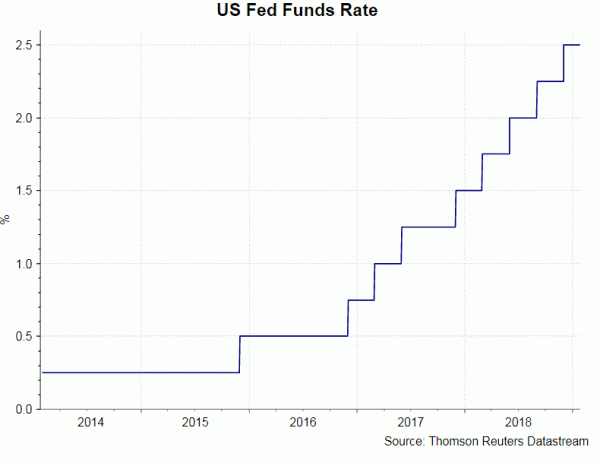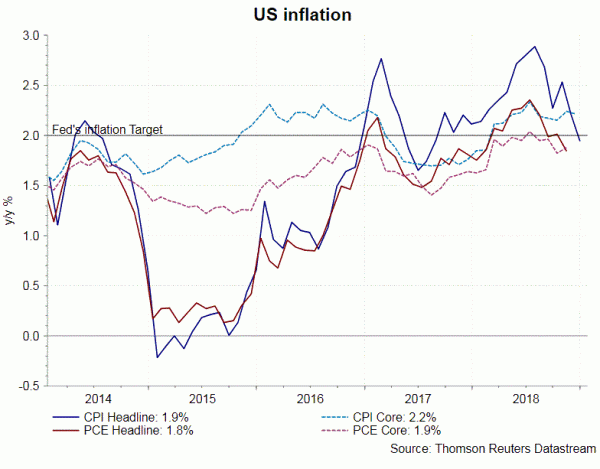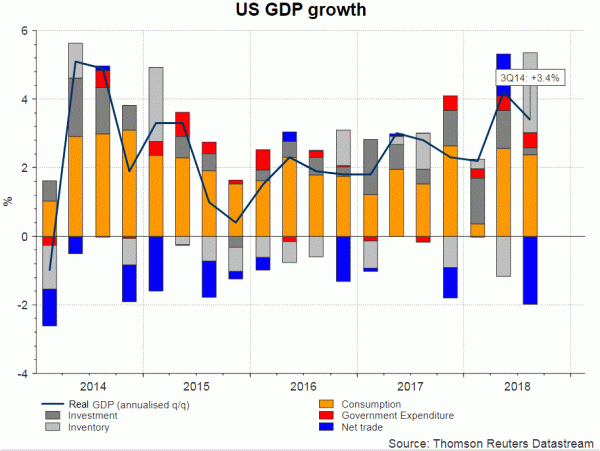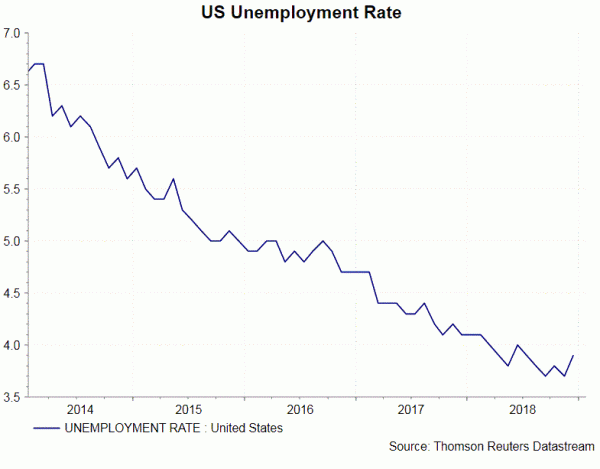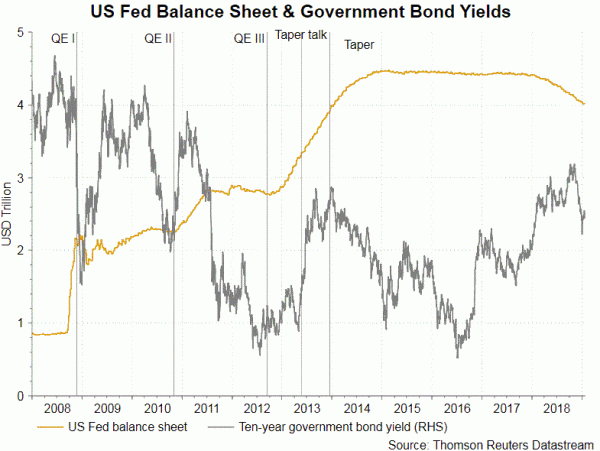There are several issues we are expecting from the FOMC meeting later this week. While it is widely anticipated that the Fed would leave its policy rate unchanged at 2.25-2.5%, the potential changes in the accompanying statement and the message conveyed by chair Jerome Powell would be indicative of the future rate path.
Policymakers might revise slightly lower their economic assessment and adjust the forward guidance, emphasizing the data-dependence of the next rate hikes. There should also be updates on the balance sheet reduction plan. Growing concerns over global growth slowdown and softening of sentiment, we expect the Fed would stay put at least in the first quarter. Yet, as economic uncertainties diminish and the growth outlook stabilizes, the Fed would still implement rate hikes later this year.
Economic developments since the December show that the US growth is losing momentum. Headline CPI eased to +1.9% y/y in December form +2.2%. Core inflation stayed unchanged at +2.2%.
Final reading of GDP growth eased to an annualized +3.4% q/q in 4Q18, compared with +4.2% in the prior quarter. This signaled the fading effect of the tax reform plan. The employment situation remained resilient.
Nonfarm payrolls soared +312K last months, compared with consensus of +177K and November’s +176K. The unemployment rate climbed +0.2 percentage point to 3.9% in December. This is still far below the Fed’s long-term target of 4.5-4.6%. Growth in average earnings improved to +3.2%, beating consensus of +3% and November’s +3.1%.
Meanwhile, shortly after the last FOMC meeting, the US government was forced to shut down. The economic impacts of one-month shutdown (Dec 22, 2018 – Jan 25, 2019) probably add to the downside of US growth outlook.
The Fed might suggest that that economic activity has remained “solid” or “firm”, compared with usual description of “strong”. This can help convey a message of moderation of economic growth. Indeed, the number of times that the Fed used “strong” to describe the economy has dropped in November and December, from August and September.
Forward Guidance
At the December meeting statement, the members “judged” that there would be “some” further gradual increases in the Fed funds rate. Meanwhile, they added that “risks to the economic outlook are roughly balanced”, adding the pledge that they would “continue to monitor global economic and financial developments and assess their implications for the economic outlook”. The subtlety in the language was overturned by more dovish stance in the minutes. Recall that the minutes revealed that “many participants” preferred to be “patient about further policy firming”, amidst “muted inflation pressures”.
The focus here is how the Fed adjusts its forward guidance. Would it reiterate that “some further gradual increases” in the policy remains insight? Would it explicitly call for “patience” and indicate that the next monetary decision is “data-dependent”? The latter would signal that the Fed has turned quite dovish. We expect it to reiterate further gradual rate hikes while giving more emphasizes on upcoming economic data.
Early End to Balance Sheet Reduction?
The market moved rigorously after a WSJ report suggesting that the Fed members are considering to end the balance sheet reduction plan earlier than previously expected. The dovish statement from the report lifted stocks and dampened US dollar. Powell would certain receive questions on the issue at the press conference, if the accompanying statement fails to make itself clear.




